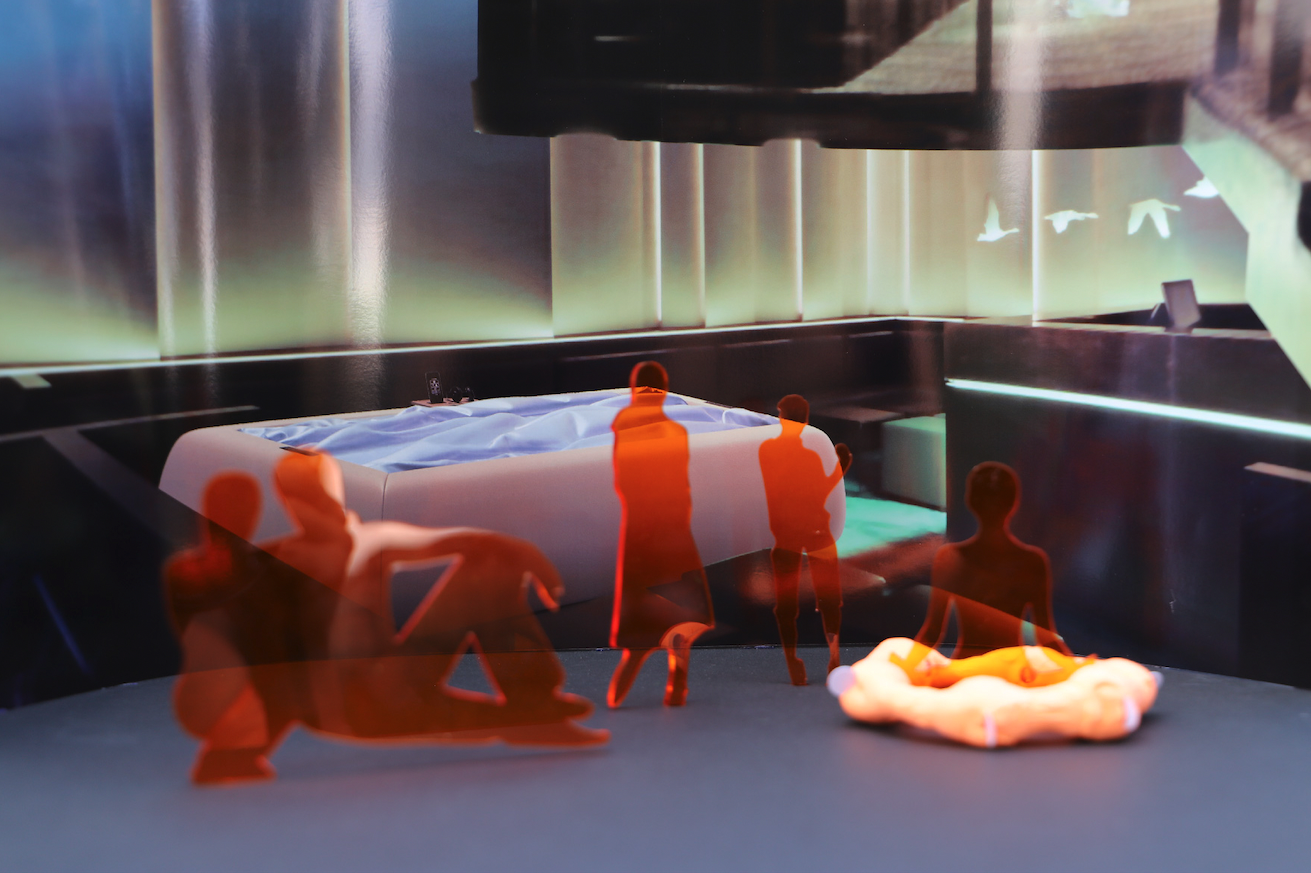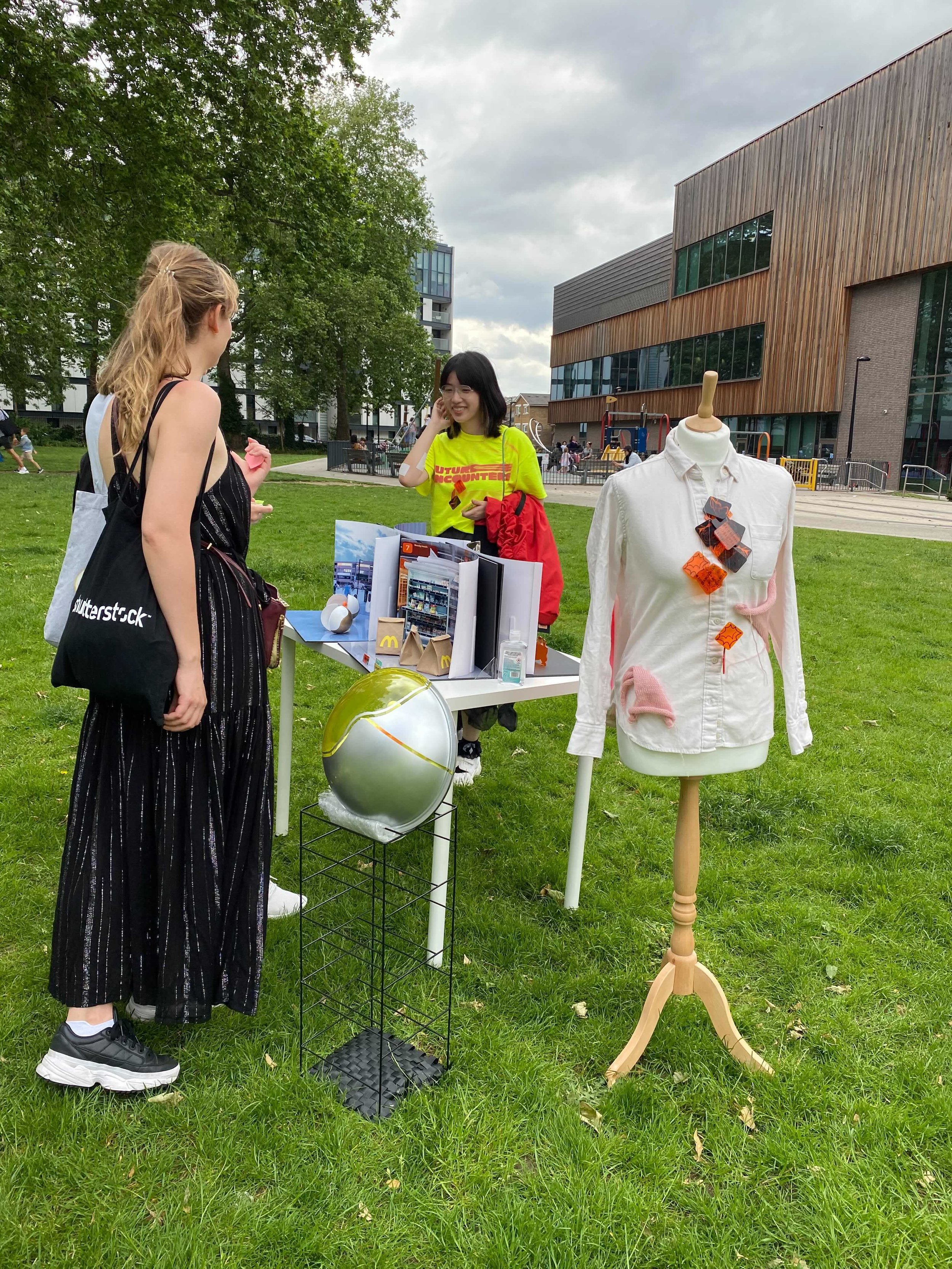
‘Chronic Painsonality’ by Xingyi He
MA Design for Social Innovation and Sustainable Futures (2020-2021)
London College of Communication, UAL, UK
Key supervisors: Anna Schlimm, Gabriel Wulff
keywords: world building, fiction, chronic pain, pain ecology, healthcare system, culture change, challenging assumption, self-care
Explore the future where humanity is no longer shy about pain. What will this change of chronic pain culture bring to the world?
Context - Chronic pain is pain that is ongoing and usually lasts longer than six months, usually not curable. It is different from acute pain that will disappear when the causes are healed.
Chronic pain is still in an awkward position where few talks from the public or people around. It is locked by masculinity dominated pain-shame culture, modern living patterns, medical services, money, etc, because of three main factors: being invisible, long-term without a cure, and involving pain. Generally, people may think that they are far away from chronic pain conditions and assume that everyone is fully able. While the real situation is the opposite. There are a lot of people around us suffering; they can be a friend of you, your partner, your families or yourself. Pains are rich and different. A lot of people suffer and suffer in a lot of ways. If we block the way of respecting pain by linking pain expression to weakness and stigma, the understanding and awareness of pain will be reduced, leading to a numb connection with our body and easily making assumptions towards others.
Theme - This project is a co-design project done by Xingyi He and Siming Wang from MA Design for Social Innovation and Sustainable futures. With me being a chronic pain sufferer and Siming having little chronic pain experience, we are an insider and an outsider blending different perspectives into the project. The project focuses on the struggle of chronic pain sufferers inside and out during their journey and how people's assumptions of everyone being fully able, which we take for granted, influence these struggles. We reflect on our attitudes towards chronic health conditions with frequent pain. Wish to cast light on the influence of self-care on the general public.
Thesis - We zoom up on the journey of chronic pain sufferers, what attitudes they take, what are the influencers behind, what difficulties they had. Through the detailed perspective, we try to help chronic pain sufferers reduce the feeling of loneliness, empower them to self-care and even be an ‘active factor’ to inspire others through their journey. We wish to bring more empathy and awareness of our pains and health conditions inside. So that we respect the feelings and invisible existences in both small and big ecological systems more, and we won’t easily make assumptions simply by how they look.
Description - In this project, we built a world where the pain people carry has become part of our common identity. During the research, we found that people with chronic pain would have difficulties in many aspects people do not imagine. There are interactions between the constant-in-pain body and the surroundings. Chronic pain sufferers could feed their identities into the environment by their modifications of the surrounding objects. Not only is the system chronic pain involved in a complicated ecology, but the individual pain-body could also form its own ecology influencing others around. No one is pain-free until everyone is pain-free.
With the influence of the insights above, we imagined friendly pain-inclusive public facilities, accessible and personalised self-care and respect for each other’s pain condition. The change of the pain culture gradually shows its impact on the objects around us. The Painsonality is the main setting in the 2100 world, and there are four scenarios that we made into dioramas. The painsonality is a personal identity recorded into the system, including an individual’s pain information. So we do not need to explain our invisible conditions and can use this information as part of our identity to get different services.
We did interviews with chronic pain sufferers, a co-design workshop, and a public pop-up exhibition in this project. All adding mutual efforts and different personalities into the vision, highlighting the important feature of chronic pain being different and various.
Xingyi He / MA Social Innovation & Sustainable Futures / LCC / 2020-21
BEng Industrial Design & MA Social innovation and sustainable futures. DIY, story-telling, system thinking, inclusive design and speculative design could be my words. I am a chronic pain sufferer now looking at chronic pain ecology. I prototyped with different methods like writing, illustration, Arduino model, VR experience, and stop motion.








